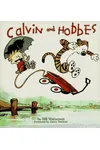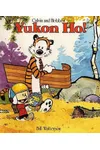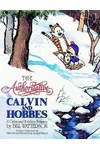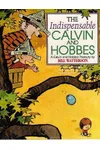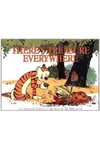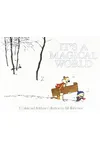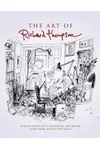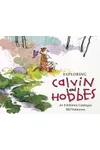Picture a shy cartoonist who spun childhood dreams into comic gold—meet Bill Watterson! Born in 1958, this American visionary created Calvin and Hobbes, a strip that blended whimsical adventures with deep philosophical musings. From 1985 to 1995, Watterson’s work captured hearts worldwide, earning him a legacy as a reclusive genius who let his art speak louder than fame.
The Making of Bill Watterson
William Boyd Watterson II grew up in Washington, D.C., before moving to Chagrin Falls, Ohio, at age six. A love for comics like Peanuts and Pogo shaped his early years, sparking his knack for drawing. After studying political science at Kenyon College, Watterson briefly worked as a political cartoonist, but his heart wasn’t in it. In 1985, after years of refining his craft, he launched Calvin and Hobbes, a strip that would redefine his career.
Bill Watterson’s Unforgettable Stories
Calvin and Hobbes, Watterson’s masterpiece, follows six-year-old Calvin and his tiger pal, Hobbes, through imaginative escapades. The strip’s vibrant watercolor Sundays and sharp wit explored themes of friendship, wonder, and the bittersweet fleetingness of childhood. Watterson’s minimalist yet expressive art style brought Calvin’s dinosaur-filled daydreams to life. Key collections include Something Under the Bed Is Drooling (1988), a fan-favorite packed with spooky humor, and The Essential Calvin and Hobbes (1988), a treasury of early strips. Later works like It’s a Magical World (1996) closed the series with poignant snow-filled adventures. Watterson’s refusal to license his characters—no Hobbes plushies here—kept his vision pure, a rarity in comics.
His lesser-known work includes editorial cartoons and a 1980s strip, Critturs, but Calvin and Hobbes remains his defining achievement. Watterson’s writing blended humor with existential musings, appealing to kids and adults alike. His disdain for commercialism and focus on storytelling over profit made him a purist in a merchandise-driven industry.
Why Bill Watterson Matters
Watterson’s influence on comics is profound. Calvin and Hobbes inspired a generation of cartoonists with its emotional depth and artistic freedom. His decision to end the strip in 1995, at its peak, preserved its magic, avoiding creative decline. Watterson’s reclusive nature—he rarely gives interviews—only adds to his mystique, letting his work stand alone. Today, his strips remain timeless, reminding readers to find joy in imagination and resist the grind of conformity.
- Born: July 5, 1958, Washington, D.C.
- Key Work: Calvin and Hobbes (1985–1995)
- Awards: Reuben Award for Cartoonist of the Year (1986, 1988)
Snag The Complete Calvin and Hobbes and dive into Watterson’s whimsical world of snowmen, spaceship dreams, and tiger hugs!
